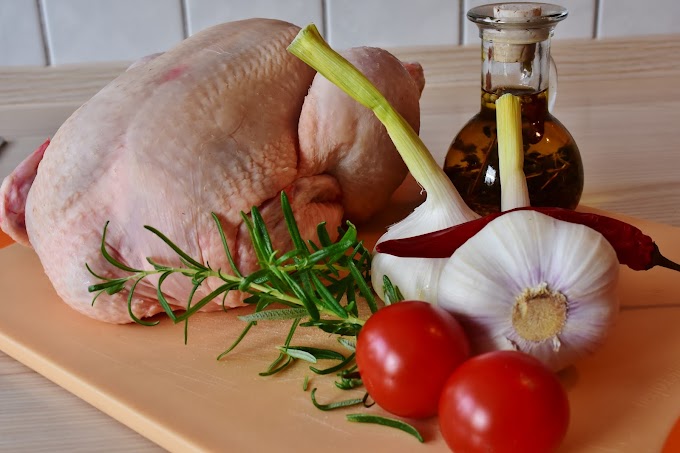Wines- What Should You Know?
In previous article I have talked about basic introduction, process and serving rules for wine. In today's article I will be talking about wine in Depth. This two articles will guide you in understanding wine and gaining optimum wine knowledge.
Wine has a very rich history which is 6000 BC old and is thought to have originated in the borders of Georgia and Iran. The wine was prepared in Europe for the first time about 4500 BC ago in the Balkans and was very common in Rome, Thrace and ancient Greece. Wine also deserves an important role in religion throughout the history. The Greek god Dionysus and the Roman god Bacchus symbolise wine and the wine is used in the catholic and Jewish ceremonies. The word wine has originated from a Proto-Germanic word "winam" which means grape.
Wine is an alcoholic beverage prepared from the fermented grape juice. Grapes have the chemical property of carrying out fermentation without the utilization of sugar. The yeast in fermentation consumes all the sugars present in grapes and converts them into alcohol. Thus,The sweetness is measured by the amount of sugar left in wine after fermentation. Dry wine has a very small percentage of residual sugar when compared with Sweet wines. Very often you will see this in bottle (label) of wine.
Similarly, When you see reserve printed on a wine label, you know that you are looking at a bottle of the best of the best. The most common place you will see a bottle of reserve, is in the red wine category because most white wines do not benefit from aging as red wines do, and that is why you will see the reserve designation very less on white wines then you will on red.
There are certain guidelines that a winemaker must follow to be able to print reserve on his/her label. Just as there are legal guidelines that must be met in order to print the varietal on the wine label, the vintage, or the area where the grapes were grown, there are also guidelines that need to be met before reserve goes on the label.
In order for reserve to go on the label the wine inside the bottle must be in some way special. It could be that the Vineyard has a area that produces finer grapes than the rest of the vineyard for whatever reason. Perhaps the drainage is better, or perhaps they get afternoon sun instead of morning sun. If the grapes used in making the wine are the best of the best then reserve can go on the label.
Another reason that reserve could go on the label, is because the Vineyard had an exceptional growing year. If the winemaker believes that the vintage is going to be exceptional,he or she can set that wine aside as a reserve. It could be that when the winemaker brought the crop in, he hand-picked the finest of the grapes and set them aside for his reserve wine. Or perhaps the winemaker will age his reserve wine for a longer period of time than his normal in the oak barrel.
If you are thinking of buying a bottle of reserve wine or you just want to try something new, I suggest you to head to a tasting room. Not all wine shops room will have tasting of reserves, but some may have tasting to prove their excellence.
Moreover, to be called vintage, the wine should be prepared from the grapes grown in a particular season of the year. High quality wines taste better if stored properly for a long time. Habitual wine drinkers generally stored the bottles of vintage wine for future consumption. For a wine to be called vintage wine in the United States the vintage wine must contain 95% of the volume of the grapes harvested in that year. All the vintage wines are bottles in a single batch so that all may have the similar taste.The optimum temperature required for ageing of wine is around 55F and the levels of humidity are supposed to be kept lower.
However, Excessive consumption of wine affects the human body. Every 100 gram of red wine provides about 85 Kcal energy, 2.6 g carbohydrates, 0.6 g sugars, 0.0 g fat, 0.1 g proteins and 10.6 g alcohol. Also, Epidemiological studies have shown that moderate consumption of wine reduced death rate by preventing heart attack. However, excess consumption may result in heart attack. Moreover, The amount of sulphite in wines varies greatly which may cause asthma in some people. A study conducted on women has shown that moderate consumption of wine also reduces the risk of certain types of cancers like that of liver, breast and pharynx.
Rules For serving Wine
- Certain wines are better at certain temperatures.
- A freezing cold Chardonnay will lose much of its taste.
- White Wine should be served cold between 43°F and 53°F. This can be done by chilling the bottle in ice for an hour before serving. You do not want to keep a glass of white wine in the refrigerator for long periods of time.
- Sparkling wines and champagnes should be served cooler, around 45°F.
- Although room temperature is ok, red wines should really be served between 55°F and 65°F.
- Invest in some quality stemware if you want to truly enjoy wine. The right glass will truly enhance the flavor of the wine and your appreciation of it.
- Wine glasses need to have a large cup or "bowl" to allow the wine to breathe, because the interaction with the air releases all the wines aromas and flavours.
White Wines
Chardonnay- A very drinkable white wine differentiated from other varieties by a special ageing and fermentation process in oak barrels. The special oak barrels give the wine its unique aromas ranging from nutty to creamy. Chardonnay is usually regarded as the white table wine.
Muscat/Moscato- This low-alcohol wine has an intensely perfumed aroma and a distinctive musky taste, and is often used as a dessert wine. The aroma of the wine can include honey and the taste includes elements of citrus and tropical fruits.
Pinot Grigio- More colourful than other white wines, Pinot Grigio is soft and delicately perfumed. The acidity of the wine gives it a nice crispiness. The wine's elements can include flowers, subtle spices, pear, and citrus.
Riesling- This lower-alcohol wine comes from the most famous of German grapes and is characterized by a unique fruit and acid balance. Unlike many other wines, Riesling is rarely prepared in oak barrels, making it more adaptable to many types of food, including hot and spicy choices. Riesling is usually a dry wine, with sweet elements of peach and honeysuckle.
Sauvignon Blanc- One of the most aromatic wines with fragrances of grass and citrus, Sauvignon Blanc is spicier than the Chardonnay varieties. The taste can have hints of melon and black currant. New Zealand produces some of the finest Sauvignon Blanc.
Most white wines should be consumed within two to three years of bottling. Exceptions to this rule are full-bodied wines like chardonnay (three-five years) or roussane (optimal between three to seven years). However, fine white wines from Burgundy (French Chardonnays) are best enjoyed at 10-15 years of age.
Red Wines
Barberra- This deep red wine comes most successfully from the Piedmont of Italy, and is heavily planted in the Central Valley of California because of its ability to withstand high temperatures. A full body, luscious berry flavours and crispiness from the high acidity characterized this wine.
Cabernet Sauvignon- These full bodied, intensely flavored red wines tend to improve with aging, often spending 15 to 30 months aging in oak barrels. Such aging gives the wine toasted vanilla and cedar tastes, while the wine also features plum, black cherry, and spice elements. Now the most widely planted grape in the world, the Cabernet Sauvignon grape actually come from a cross between two French varieties: Cabernet Franc and Sauvignon Blanc.
Merlot- A softer and much less intense red wine than cabernet that is ready to drink sooner. The dry smoothness of the wine makes it a popular choice in restaurants. Merlot is often mixed with cabernet to soften its acidity. Descriptions of the wine's tastes include many of the same as cabernet and green olive, herbs, and chocolate. The Merlot grape responds well to cooler climates making it very versatile.
Pinot Noir- Widely regarded as the most difficult grape to grow, this delicate wine is logically one of the most sought after varieties of wine, originating in the Burgundy region of France. This elegant wine can include elements of raisin, black cherry, and strawberry.
Sangiovese- This dry red wine is characterized by a smooth texture, medium-bodied spice flavour, and an earthy aroma. Made from a grape native to Northern Italy, Sangiovese is often used for Italian Chianti wines.
Syrah- This flavorful wine originates in the Rhone region in France and has many raspberry, pepper and spice aromas and flavours. In addition to France, the grape for Syrah is now also very successful in Australia.
Similarly, Wines with a cork closure are better equipped for aging than those bottles with a screw cap. Cork is never completely hermetic, allowing a minute amount of oxygen to enter the bottle, which helps the wine to evolve and mature with time.

























0 Comments
If you have any doubts , please let me know